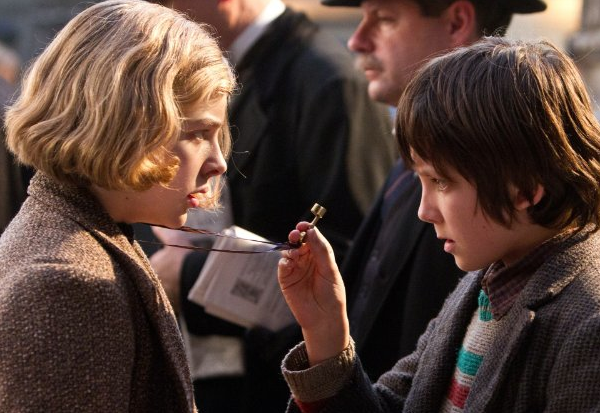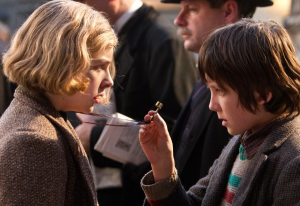

The “we’re trying really hard to seem like we’re not acting like the actors we are” video spots of everyone from Brad Pitt to Adam Sandler talking about the magic of filmmaking that aired during the 84th Academy Awards were a tribute to the art form. “Hugo,” which took home five of Hollywood’s most coveted prizes last month, was just as self-indulgent. Perhaps the post-award season re-release made matters worse, but watching “Hugo” is more of a tiring than whimsical experience.
Based on “The Invention of Hugo Cabret,” Director Martin Scorsese wastes no time cutting from swooping wide shot after wide shot of Parisian parks, buildings and architecture of some time after World War I. The time frame confusion makes the acclaim of the film’s art direction particularly puzzling, since the costumes and set design could indicate that this story is taking place anytime between 1920 and 1950. The fact that the cast is almost entirely English is just as confusing, but Scorsese can’t be blamed entirely; someone must have spread a rumor among Hollywood filmmakers that American audiences, too lazy to read subtitles, have an easier time fooling themselves that the British are French because they live closer to each other geographically.
Some of the scenery is truly beautiful, albeit being 3D eye candy. The strongest images are those of the inner workings of clock towers in a Parisian train station, which become an all-too-obvious symbol of the film. The fact that what you are seeing isn’t really there is not so bothersome if you allow yourself to follow the paths of the clicking gears, all moving in literal and figurative time. Although the comparisons to characters, like Hugo the orphan boy (Asa Butterfield) and Papa George (Ben Kingsley), are almost ridiculously in-your-face, the overarching ideas about finding one’s place in the world and what humans need and the short nature of life itself are complex, smart and sincere — they are just way over children’s heads.
This kid’s movie was also not so kid-friendly because Scorsese fell into an age old trap: he made a movie meant for a younger audience too long. The initial plot — an orphan boy “having an adventure” to fix a robot his father (Jude Law) found in spite of the difficulty of the task and a train inspector (Sacha Baron Cohen) chasing him through a crowded and interesting looking city with a dog by his side — is generally basic but visually fantastic enough for young ones watching “Hugo.” But when the plot twist that defines the entire film comes into play, “Hugo” begins to drag on for almost an hour more than it should have. It was simply two-plus hours too long.
This twist brings the idea that seemed to captivate Hollywood in 2011 into play. The homage “Hugo” and Best Picture “The Artist” pay to the silent films of yester year is deserved and interesting for people who know anything of pieces like “Voyage To The Moon.” But not all audiences are Charlie Chaplin fans. In this era of remakes and reboots, they are likely looking for something new. While “Hugo” is multifaceted and all-out beautiful, it doesn’t provide anything fresh.
